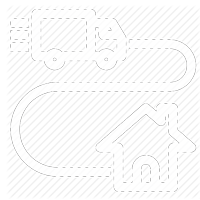The Modern Guide to Electric Bikes: What to Know Before You Buy
Electric bikes are rapidly gaining popularity across the U.S., offering a convenient, eco-friendly alternative to traditional cycling. Whether you’re commuting to work, exploring off-road trails, or just enjoying a weekend ride, e-bikes provide the added benefit of powered assistance—helping you ride farther, with less strain. As e-bike models continue to evolve, features like step-through frames, fat tires, cargo racks, and long-range motors have made them an appealing option for adults of all ages.
Before investing in your first electric bike, it’s important to understand what makes these bikes different from standard bicycles. From motor and battery placement to weight and price range, here’s what you need to know before making your decision.
How Do Electric Bikes Work?
Electric bikes use a rechargeable battery to power a small motor that assists your pedaling. Most e-bikes offer multiple pedal-assist levels, allowing you to adjust the motor's support based on terrain or effort level. The assistance only works while you're pedaling, keeping the feel close to a traditional bike but with a helpful boost on hills or longer distances.
Unlike motorcycles or mopeds, e-bikes in Class 1 and Class 2 categories are typically limited to a top speed of 20 mph with assist. Class 3 models can go up to 28 mph. In most states, you don’t need a license or insurance to ride one, but helmet laws and bike lane access can vary—so it’s always a good idea to check your local rules.
How Much Do Electric Bikes Weigh?
Because of the built-in motor and battery, electric bikes are heavier than traditional bicycles. On average:
-
Hybrid or commuter e-bikes weigh around 50–60 pounds.
-
Folding e-bikes can weigh as little as 35–45 pounds.
-
Fat tire and cargo models may weigh 65 pounds or more.
While the added weight helps provide a stable ride, it’s something to consider if you need to lift or transport your bike. Thankfully, most of the weight is low and centered, improving balance and control.
How Much Do Electric Bikes Cost?
In the U.S., electric bike prices typically range from $1,000 to $5,000, depending on features, battery range, and build quality. Most quality e-bikes fall into the $1,500–$3,000 range, and here’s what affects the price:
-
Motor type and position: Mid-drive motors tend to be more efficient and cost more than hub motors.
-
Battery capacity: Higher-capacity batteries allow longer rides between charges and increase cost.
-
Frame and components: Durable materials, suspension systems, integrated lights, and cargo racks can all influence pricing.
Buying an e-bike is an investment—but it’s one that can pay off quickly in reduced transportation costs and improved health.
Final Thoughts
Electric bikes are reshaping the way people move—offering a fun, accessible, and efficient ride for nearly every lifestyle. Whether you’re looking for a long-range e-bike, a 750W step-through commuter, or a cargo electric bike with rear rack, Electric Whispering is your trusted source for curated, high-quality models shipped free across the U.S.
Our team is here to help you find the best fit for your needs. Every purchase includes expert support and honest service from start to finish. Call us at 888-783-9503 to get started—or browse our electric bikes for commuting, recreation, or family riding today.





